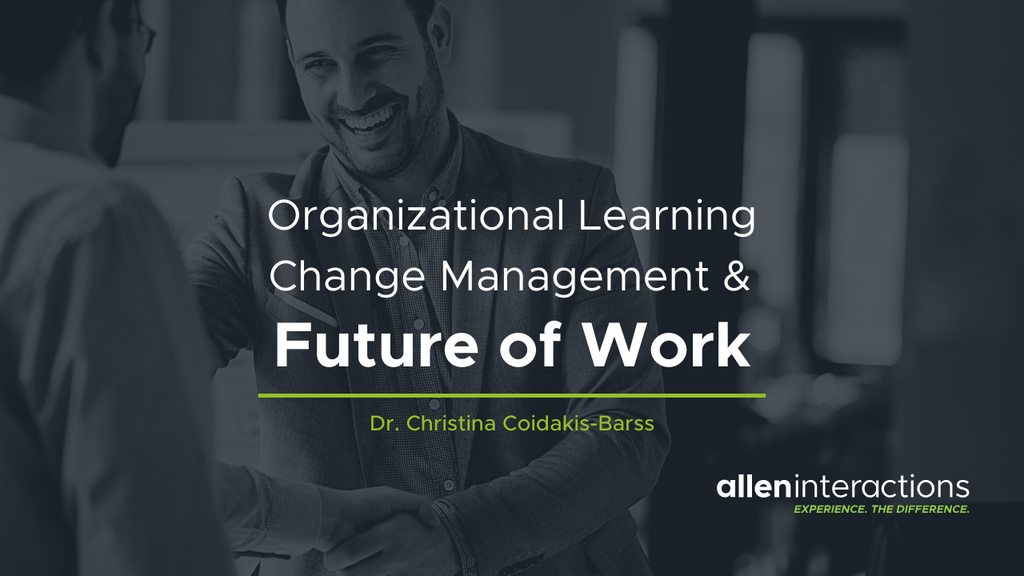Organizational Learning, Change Management, and the Future of Work

As leaders how do we successfully lead through and to the future of work?
Organizational changes that we envisioned to be years from now, that were mere glimmers in January 2020, are now the strong sunlight that floods our world. COVID-19 and increased automation adoption significantly impacted the occupational mix. Technological solutions rapidly pervade our work lives. Highly skilled employees are experiencing the strongest growth. Practices and platforms for contact tracing, and shift management are the new normal. This VUCA environment has pushed us to focus on the jobs we need to create and not the ones we could protect. Middle and low skilled jobs are at highest risk. Artificial Intelligence is being quickly embedded into our workflows and business models.
Focusing on the Big Picture
Utilizing the 3-Box Solution by Vijay Govindarajan helps to logically compartmentalize today’s possibilities and tomorrow’s probabilities. This simple and powerful model guides leaders strategically accept drastic changes to current state to open capacity for future innovation.

The Future of Work is Here
Effective digital transformation first requires enhancing the systems core to an organizations’ mission, vision, and purpose; and second building new systems that technologically enable organizations to thrive in a digital-first marketplace. Traditional organizational structures and hierarchies could inhibit innovation. Successful digital business innovation has enabled work from home productivity. Letting go of old habits and mindsets opens organizational capacity and capability to innovation, enabling worker productivity through tools such as mobile, data access, and AI-assisted processes. A technical mediated workplace meets customer expectations, provides all access to organizational assets, and transforms business and/or processes. It is about data driven decisions and exceeding expectations!
Change Leadership
Keeping a relentless focus on the employee and customer experience is core to an organization’s business to maintain peak profitability. For organizations to manage disruptive change with minimal employee trauma, psychological safety is required and compassionate communication.
The limits of some change management models and programs could inhibit innovation. The fallacy that adding technology will simply make organizations better could inhibit innovation. Automating broken systems does not fix them.
Seeking to have both change management and change leadership helps to create the most valuable experience for our customers and employees.
- Change leadership is the strategic outlook of disruption and innovation
- Change management is the tactical practicalities of integrating new digital strategies
Change leadership empowers employees to think people first and technology second. It enables positive meaningful employee and customer interactions. Amy Edmondson, a leading Harvard Business School researcher on psychological safety, defines it as “perceptions of the consequences of taking interpersonal risks in a particular context such as a workplace.” When people feel safe to take risks and be vulnerable, they can be creative and innovative.
Learning as an Accelerator
An agile cultural mindset achieves decreases in the learning curve, increases in the ROI of new initiatives, and improvements to user experience. Managers can focus on clear and frequent communication of the organization’s core values, mission, and purpose. Organizations become places where employee development is a reality through upskilling, reskilling, career development, and workplace training. We are on the precipice of technological integration, accelerating career development.
Organizations willing to let go of traditional learning delivery mechanisms in favor of digital adoption platforms gain better insight into their employees. Efficient contextualized learning supports self-directed career development. As stated, low-skilled jobs are decreasing due to automation. Workers know it and are demanding the security of learning and development. Employees recognize they are viewed as worthy when growing and development is a fundamental organizational value. Learning is engaging, and employees prefer work environments that are engaging.
Summary
COVID-19 has accelerated us into the ‘future of work.’ Leaders worldwide are adopting an agile growth mindset investing into employee’s abilities and community’s sustainability. Their actions are saying loudly: "you are part of our future." Learning holds the key to keeping employee engagement levels high and harness employees' support in implementing the changes. Let us lead bravely and proudly, fostering a sense of stability and belonging as we move forward into the future of work.
